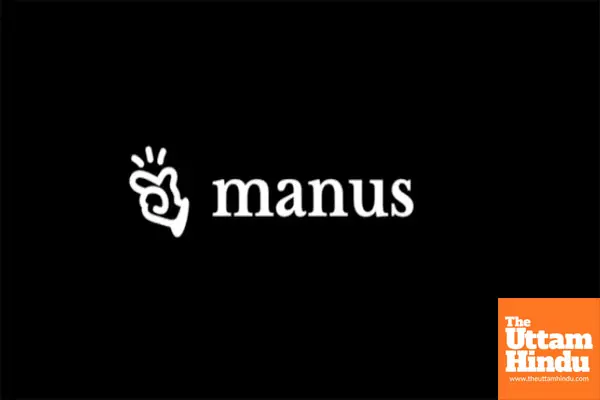
China's AI Model 'Manus' Sparks Global Buzz, Challenges OpenAI and Google

New Delhi (The Uttam Hindu): China has unveiled a new artificial intelligence (AI) model, Manus, just weeks after the launch of DeepSeek, underscoring the country's rapid advancement in the AI field. Developed by the Chinese startup Monica, Manus is being compared to leading AI systems from OpenAI, Google, and Anthropic. The company claims that Manus is a general-purpose AI capable of executing tasks autonomously, without human intervention.
What is Manus?
Manus is a highly advanced AI designed to think, plan, and execute real-world tasks independently. It can create websites, plan trips, analyze stocks, and much more, all based on a single user prompt. Unlike typical AI chatbots that merely provide answers, Manus can take full action to complete tasks. For instance, if asked to create a report on climate change, Manus will conduct research, write the report, generate charts, and compile everything into a final document, without requiring additional instructions.
Why is Manus unique?
Launched on March 6, Manus has quickly garnered attention worldwide. According to its creators, the model outperforms OpenAI’s DeepResearch on the GAIA benchmark, which measures AI performance. A demo video released by Monica showcased Manus interacting with the internet in real time, gathering data, and executing complex tasks. Manus can browse websites, capture screenshots, record online activity, and generate reports, spreadsheets, or presentations, making it a major leap forward in AI automation.
Key features of Manus
Manus works independently in the cloud, which means it continues to process tasks even if a user disconnects their device, allowing for uninterrupted progress on long-term projects. Unlike many AI models, Manus actively browses the web and interacts with websites while displaying its workflow. This transparency helps users understand how the AI gathers and processes information.
Manus learns from user interactions to provide more tailored results, adapting over time to improve the relevance and quality of its responses.
The AI can access platforms like X (formerly Twitter) and Telegram to collect and process data. It can also manage multiple screens at once, which enhances its efficiency in executing tasks.
Manus doesn't just generate text-based outputs. It can create detailed reports, interactive presentations, and even code-based outputs such as data visualizations and spreadsheets.
How to use Manus AI
Manus functions similarly to AI chatbots like ChatGPT but offers far more autonomy. Users simply input a task, such as “Create a 7-day travel itinerary to Bali within a budget,” and Manus will begin researching, gathering data, and structuring a response. It will present a comprehensive itinerary complete with links, maps, and travel suggestions. If a user disconnects, the AI continues working in the cloud and notifies them once the task is complete.
Availability and future plans
Currently, Manus is available through an invitation-only web preview. While Monica has not announced an official public release date, they have hinted that the model will roll out soon. Additionally, the company plans to open-source Manus in the coming months, which would allow developers to integrate it into their own projects, potentially leading to rapid improvements and widespread adoption of the technology.
What’s next in artificial intelligence?
AI-powered browsers and agents are gaining momentum among tech companies, and Manus is positioned at the forefront of this trend. With its ability to conduct deep web research, create structured outputs, and automate tasks, Manus represents a shift towards AI-driven productivity tools. As AI systems continue to become more autonomous and capable, competition between companies like OpenAI, Google, and Monica is expected to intensify, signaling a new era in the AI landscape.
The excitement surrounding Manus highlights China’s increasing role in AI innovation, with the model poised to challenge established players and revolutionize how we interact with technology.

